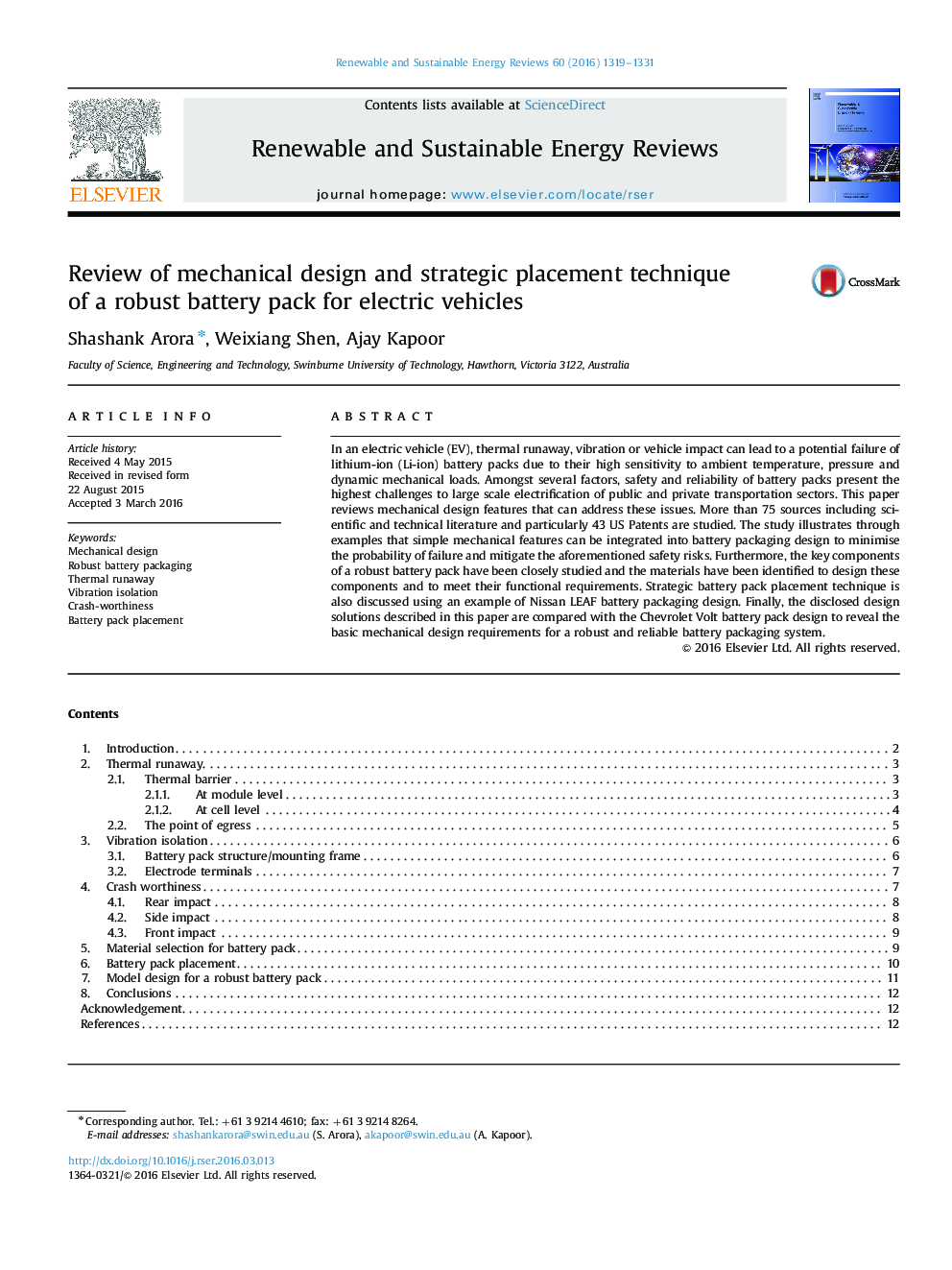| Article ID | Journal | Published Year | Pages | File Type |
|---|---|---|---|---|
| 8114457 | Renewable and Sustainable Energy Reviews | 2016 | 13 Pages |
Abstract
In an electric vehicle (EV), thermal runaway, vibration or vehicle impact can lead to a potential failure of lithium-ion (Li-ion) battery packs due to their high sensitivity to ambient temperature, pressure and dynamic mechanical loads. Amongst several factors, safety and reliability of battery packs present the highest challenges to large scale electrification of public and private transportation sectors. This paper reviews mechanical design features that can address these issues. More than 75 sources including scientific and technical literature and particularly 43 US Patents are studied. The study illustrates through examples that simple mechanical features can be integrated into battery packaging design to minimise the probability of failure and mitigate the aforementioned safety risks. Furthermore, the key components of a robust battery pack have been closely studied and the materials have been identified to design these components and to meet their functional requirements. Strategic battery pack placement technique is also discussed using an example of Nissan LEAF battery packaging design. Finally, the disclosed design solutions described in this paper are compared with the Chevrolet Volt battery pack design to reveal the basic mechanical design requirements for a robust and reliable battery packaging system.
Related Topics
Physical Sciences and Engineering
Energy
Renewable Energy, Sustainability and the Environment
Authors
Shashank Arora, Weixiang Shen, Ajay Kapoor,
